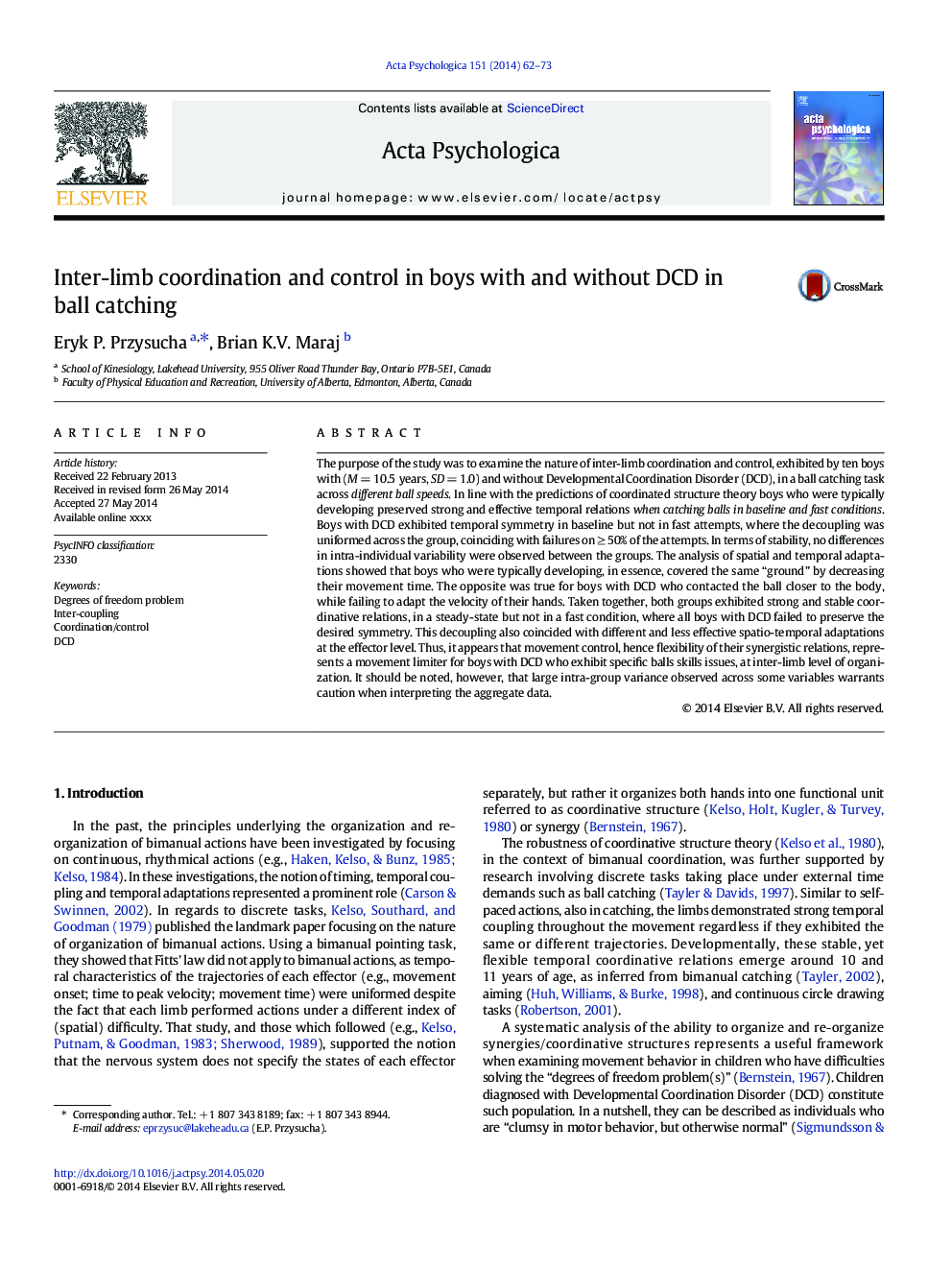| Article ID | Journal | Published Year | Pages | File Type |
|---|---|---|---|---|
| 7277545 | Acta Psychologica | 2014 | 12 Pages |
Abstract
The purpose of the study was to examine the nature of inter-limb coordination and control, exhibited by ten boys with (M = 10.5 years, SD = 1.0) and without Developmental Coordination Disorder (DCD), in a ball catching task across different ball speeds. In line with the predictions of coordinated structure theory boys who were typically developing preserved strong and effective temporal relations when catching balls in baseline and fast conditions. Boys with DCD exhibited temporal symmetry in baseline but not in fast attempts, where the decoupling was uniformed across the group, coinciding with failures on â¥Â 50% of the attempts. In terms of stability, no differences in intra-individual variability were observed between the groups. The analysis of spatial and temporal adaptations showed that boys who were typically developing, in essence, covered the same “ground” by decreasing their movement time. The opposite was true for boys with DCD who contacted the ball closer to the body, while failing to adapt the velocity of their hands. Taken together, both groups exhibited strong and stable coordinative relations, in a steady-state but not in a fast condition, where all boys with DCD failed to preserve the desired symmetry. This decoupling also coincided with different and less effective spatio-temporal adaptations at the effector level. Thus, it appears that movement control, hence flexibility of their synergistic relations, represents a movement limiter for boys with DCD who exhibit specific balls skills issues, at inter-limb level of organization. It should be noted, however, that large intra-group variance observed across some variables warrants caution when interpreting the aggregate data.
Related Topics
Life Sciences
Neuroscience
Cognitive Neuroscience
Authors
Eryk P. Przysucha, Brian K.V. Maraj,
